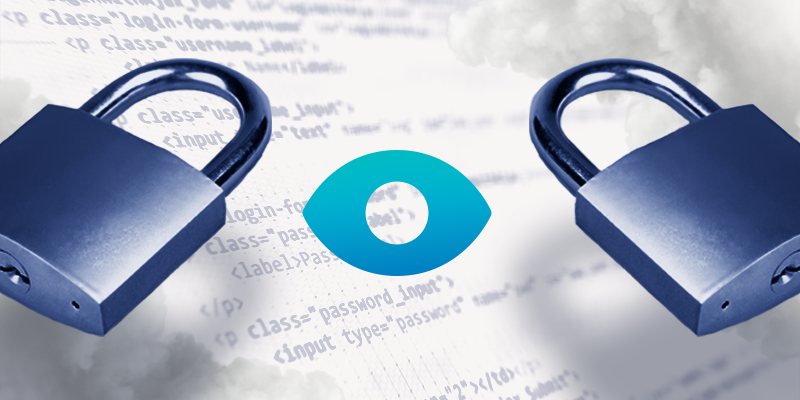
8 Essential Salesforce Security and Monitoring Tools for 2024

Salesforce security and monitoring tools provide the support your InfoSec team needs to maintain a secure and reliable data security strategy.
Why It Matters: Cybercrime continues to grow in frequency and scale. And if you don’t fortify your strategy, you run the risk of falling victim to a costly attack.
- In 2024, cybercrime is predicted to cause $9.5 trillion in damage.
- More than 60% of companies don’t have a plan in place to respond to a security incident.
Here are eight Salesforce security and monitoring tools that should be part of your DevOps strategy in 2024:
- Static Code Analysis
- Activity Monitoring
- Configuration Inspection
- Security Health Check
- CI/CD Automation Tools
- Data Encryption
- Audit Trail
- Security Dashboard
1. Static Code Analysis
Strong code is a critical aspect of a successful data security strategy. Static code analysis monitors the health of your code as it’s entered and alerts developers to any detected errors.
These tools also provide encryption capabilities to safeguard sensitive data stored in Salesforce.
Reliably strong applications and updates prevent potential vulnerabilities and enable your team to quickly respond to emerging issues.
2. Activity Monitoring

Unauthorized access to your Salesforce environment isn’t always immediately apparent. In fact, these breaches can occur for months before anyone notices a bad actor has accessed system data.
Using a Salesforce security and monitoring tool to track and log user activity within Salesforce will enable your team to identify any outliers and flag suspicious activity.
These insights can be compiled into dashboards and reports for easy review.
3. Configuration Inspection
The way your settings are configured can either help or hinder your security goals.
An automated security posture management tool will be able to audit security configurations within your Salesforce environment to ensure they meet your needs.
Improper settings lead to overexposed data. And when too many people can access sensitive data, the likelihood of costly mistakes skyrockets.
4. Security Health Check

A comprehensive data security strategy will encompass a variety of tactics, tools, and metrics. Having a contemporary view of these factors offers critical insights into the success of your current strategy.
Scanning your environment for a series of security considerations will give you an updated view on what needs to be reinforced.
Salesforce security and monitoring tools can be used for periodic checkups to direct future action.
5. CI/CD Automation Tools
Reducing manual processes in your Salesforce DevOps pipeline expedites the production of applications and updates while reducing the potential for human error to introduce data security vulnerabilities.
CI/CD automation enables teams to respond to emerging threats with reliable patches and security updates.
The flexibility provided by CI/CD tools allows an organization to institute immediate needs when existing vulnerabilities are found to threaten the security of their data.
6. Data Encryption
Sensitive data requires an additional layer of protection. This is mandated by many data security protection regulations, but it is also simply a best practice.
Data encryption hides sensitive data even if it becomes exposed to individuals without the proper permissions to view it.
Encryption is a critical aspect of instituting the proper levels of protection for personally identifiable information (PII), financial information, health information, or anything else deemed sensitive.
7. Audit Trail

We mentioned that the way team members interact with the Salesforce environment significantly impacts security considerations. So, what do you do when you notice something is awry?
Version control tools provide detailed logs of user activity and changes made to a DevOps project to maintain accountability if something goes wrong.
This also enables your team to work backwards to find the source of the issue so it can be quickly resolved.
8. Security Dashboard
Maintaining visibility over your organization’s data security efforts is made a lot more difficult when the relevant information is spread across multiple tools, interfaces, and departments.
Salesforce security and monitoring tools can be used to create a centralized dashboard that offers a comprehensive view of your Salesforce org’s security status, including alerts and recommended actions.
Having contemporary information is critical to maintaining a secure environment. These tools provide the insights you need to rectify any potential vulnerabilities before they are compromised.
Next Step…
These Salesforce security and monitoring tools offer the coverage you need to find and fix vulnerabilities before they become major headaches. Now it’s time to dig deeper into one of the most important tools to ensure you see the greatest benefits.
Check out our blog, How to Perform an Effective Security Code Scan, to learn how to protect your system from the inside out.
FAQs
What are some common security threats in Salesforce DevOps?
Faulty code deployments, unauthorized access to sensitive data, and insecure integrations with third-party applications are all common mistakes within Salesforce that create data security vulnerabilities. Insecure code deployments can lead to injection attacks or data leaks if proper code review and testing protocols are not followed. Unauthorized access can occur due to misconfigured permissions or weak authentication mechanisms, allowing malicious actors to gain entry and exploit data. Additionally, insecure integrations with third-party apps can introduce vulnerabilities, especially if data is exchanged without proper encryption or validation checks.
How can I ensure proper data permissions and security settings within Salesforce?
Conduct a thorough assessment of user roles and profiles to align access levels with job responsibilities. Utilize Salesforce’s role hierarchy and sharing rules to control data visibility and restrict access to sensitive information. Implement field-level security to limit who can view or edit specific fields within records. Regularly review and update security settings to adapt to evolving business needs and compliance requirements. Additionally, provide comprehensive training to users on security best practices and regularly audit user access to identify and address any potential security gaps.
How can I evaluate the overall security posture of my Salesforce org?
First, conduct a comprehensive security assessment, including a review of user permissions, data encryption settings, and access controls. Use an automated policy scanner to ensure your settings align with organizational requirements. Regularly monitor user activity and conduct periodic security audits to ensure ongoing compliance with security policies and regulations. By taking a proactive and holistic approach to security evaluation, you can effectively identify and mitigate potential risks to your Salesforce environment.

